Back to aerospace
Planetary atmosphere entry modeling involves challenging flow solutions rich with flow physics and flow-boundary interaction. The protecting vehicle heat shield (TPS) surface evolves with time due to the ablation and mechanical erosion of the TPS material. Shock wave chemistry produces active radicals capable of damaging of the TPS and posing risks to the vehicle integrity.
These conditions pose specific requirements to the computational meshes that often need to resolve the shock wave structure in the same run with local feature modeling at the evolving surface of the TPS.
All these challenges are met with meshing features available in GridPro. Mesh clustering at the artificial surfaces allows for the shock wave capturing while the control net surfaces (splines) are perfect for modeling of the evolving surfaces. Huge variations in the mesh scales when the local features need to be resolved are seamlessly solved with the mesh topology clustering.
CEV Case Description
CFD analyses were performed to estimate the ability of compression pads in a fore-body heat shield thermal protection system (TPS) to survive the high speed reentry heat loads. These analyses are necessary to estimate the heat load acting on the structural elements of the compression pads, such as metal alloy central bolt.
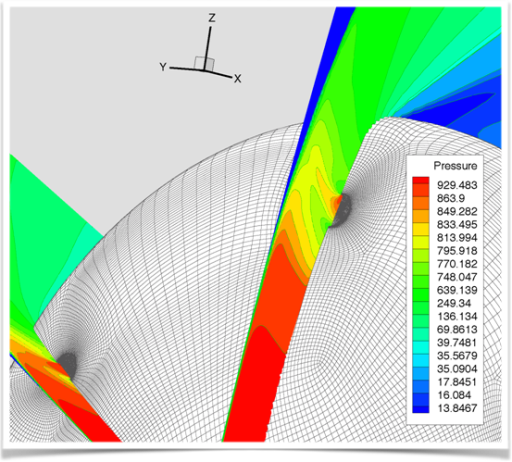 |
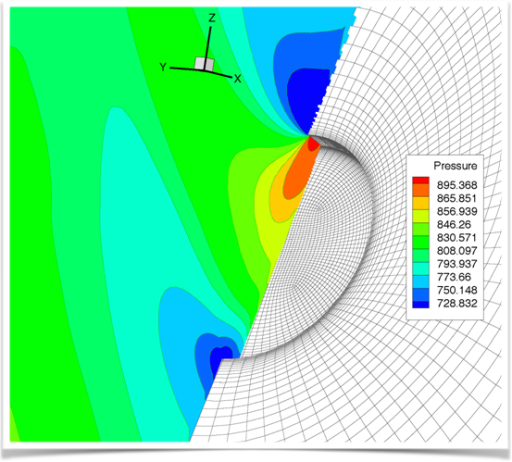 |
CEV Topology Details
Complex topology was created in stages taking advantage of the problem symmetry. A portion of the initially created topology was rotated around the vehicle axis to create the entire wireframe:
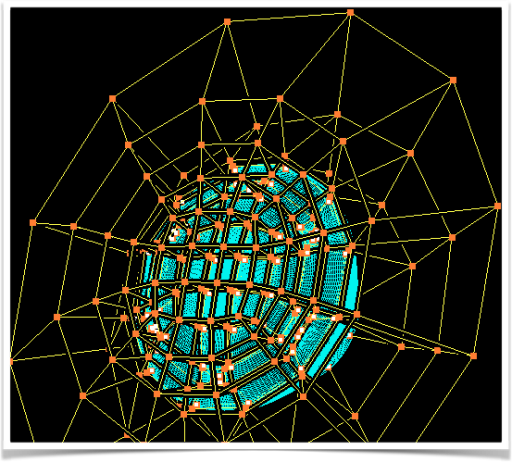 |
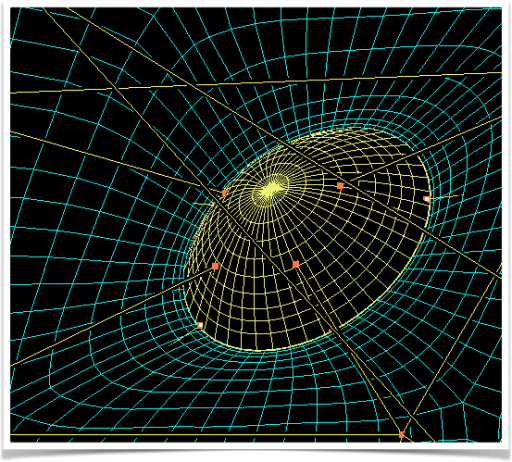 |
To smooth the mesh at around the compression pad cavity a dome-like artificial surface was create with a layer of the topology assigned to the surface.
CEV Mesh Samples
Over all surface mesh structure created with use of the control net surfaces and a volume mesh cross-section cut at the compression pad cavity. The mesh was later adapted to capture the shock wave.
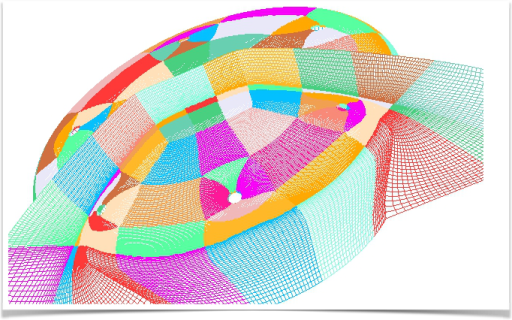 |
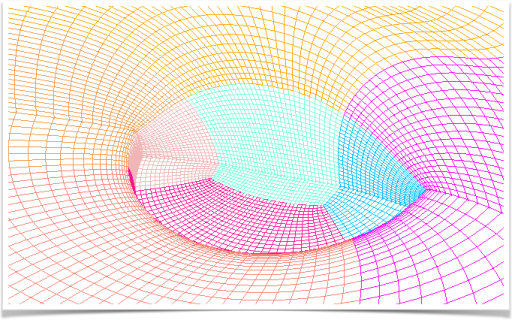 |
Compression pad cavity meshing was done along with overall vehicle meshing. This allowed for the multiscale problem to be solved in a single CFD run.